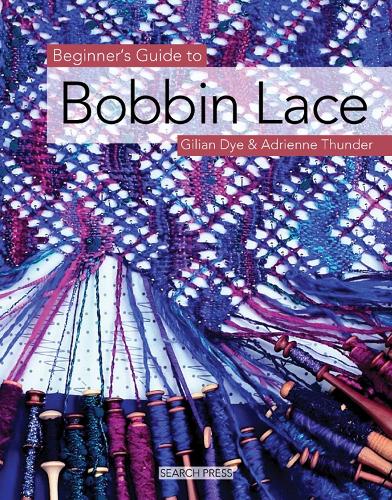
Beginner's Guide to Bobbin Lace
(Paperback)
Publishing Details
Beginner's Guide to Bobbin Lace
By (Author) Gilian Dye
By (author) Adrienne Thunder
Search Press Ltd
Search Press Ltd
19th September 2007
1st November 2007
United Kingdom
Classifications
General
Non Fiction
746.22
Physical Properties
Paperback
80
Width 204mm, Height 260mm
328g
Description
Explore the world of Bobbin Lace with this book, which takes you through simple Torchon ground pieces to scarves, purse and bags.
Bobbin lace may look complicated when you see a pillow set up with dozens of bobbins, but it will seem far less daunting when you realise that only four bobbins (two pairs) are in use at any one time, and there are only two moves twist and cross that you can do.
While the basic lace stitches are common to all types of bobbin lace, different lacemaking traditions developed different ways of putting these stitches together. Bruges lace, for example, uses less than a dozen pairs of bobbins and a relatively coarse thread to create curved braids and flower-like motifs which are linked to form the fabric; on the other hand point ground laces, such as Chantilly or Bucks Point, are worked from one end to the other in fine silk or cotton and may need a hundred pairs or more.
Reviews
"'Bobbin lace may look complicated when you see a pillow set up with dozens of bobbins, but it will seem far less daunting when you realise that only four bobbins (two pairs) are in use at any one time, and there are only two moves - twist and cross - that you can do.'" This is the best book I have found so far in my fairly short bobbin lace career and I will be recommending it to the attendees whether or not permission is granted to use the Bookworm. The photographs and instructions are presented very clearly. I also think the range of projects, especially in the variety of materials used makes the book very attractive to those who have experience in other fiber arts and wish to try bobbin lace. Candace Knerr-Customer
Author Bio
Gilian Dye and Adrienne Thunder are experienced and enthusiastic lacemakers and teachers. Both hold City and Guilds Lacemaking Part 2 and are active members of local, national and international lace organisations. In addition to this, both have served on the Executive Committee of The Lace Guild. Over many years they have developed patterns and tips for working with non-traditional materials, have won prizes in major competitions and had work exhibited in the UK and overseas.
